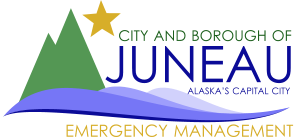Avalanche Advisory Archive Pre-2016
| Date Issued: | 2013-04-04 |
|---|---|
| Danger: | 2 |
| Trend: | 5 |
| Probability: | 4 |
| Size: | 3 |
| Problem: | 0 |
| Discussion: | ...STRONG WIND FROM THIS AFTERNOON THROUGH FRIDAY MORNING... TONIGHT...MOSTLY CLEAR. LOCALLY WINDY. LOWS AROUND 26...RANGING TO AROUND 18 IN WIND SHELTERED AREAS. NORTHEAST WIND 10 TO 20 MPH. WIND GUSTS TO AROUND 40 MPH NEAR DOWNTOWN JUNEAU AND OUT OF INTERIOR PASSES. FRIDAY...INCREASING CLOUDS. LOCALLY WINDY IN THE MORNING. CHANCE OF SNOW AND RAIN IN THE AFTERNOON. HIGHS AROUND 38. NORTHEAST WIND 10 TO 20 MPH. WIND GUSTS UP TO 40 MPH IN THE MORNING NEAR DOWNTOWN JUNEAU AND OUT OF INTERIOR PASSES. The temps yesterday hovered around the freezing point in start zones. Time with low winds and no precip allowed the snowpack to continue settling. Creating a relatively low hazard to start things off for us this morning. However in Alaska change is the only constant: Today solar gain and high winds are going to increase the hazard. Last night the wind changed to a cold north wind about 8pm. It didn't start picking up in intensity until this morning and is still only moderate at ridgetop level, though that is forcasted to increase through the day. Several crusts within the top meter of snow could serve as weak layers if loaded with enough wind transported snow. Hazard will be increasing with wind load during the day. Watch for top loading on SE - S - W aspects and cross loading on all other aspects. Avalanche Danger is MODERATE this morning increasing to HIGH this evening after a day of wind loading as the gap winds hit their peak: Natural avalanches unlikely this morning, possible later in the day, potentially destructive avalanches unlikely to come near or reach developed areas. Except the Flume Train and Perserverance Basin which should be avoided all day! Human triggered avalanches possible. Unstable slabs probable on wind loaded terrain getting more tender as the day goes on. In Urban Zones this is a good time to stay out from under avalanche terrain when possible. Backcountry Travel is generally safe. Normal caution is advised with particular attention to wind affected slopes, SE - W facing aspects. |
| Tip: | DECISION MAKING STRATEGIES Decision-making can be defined as examining, choosing, and carrying out options. When assessing avalanche risk, the so-called '3 ? 3 Filter? (und Reduktionsmethode) by Werner Munter is a probabilistic strategy of decision-making for the assessment of avalanche risk. Here, the three avalanche factors are looked at through three regional filters. The aim of the 3x3 filter method is to minimize the risk of triggering an avalanche as much as possible. In practice, this means to work out whether a certain slope is safe to travel on. The three avalanche causing factors: 1. Conditions (snow and weather) can be viewed from three different perspectives: 1. Regional 1. Always start with a regional assessment of avalanche risk. Thanks to avalanche bulletin reports and weather forecasts we are aware of the general danger levels in the region. 2. For the assessment of a local area, constant observation of our surroundings can help us to identify possible danger zones. 3. When evaluating individual slopes for a descent, look at the terrain for clues of potential avalanche danger. |
| Forecaster: | Chris Eckel |
